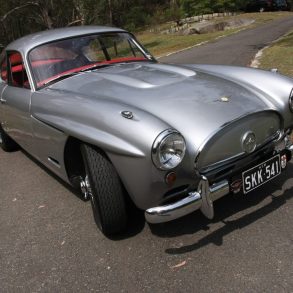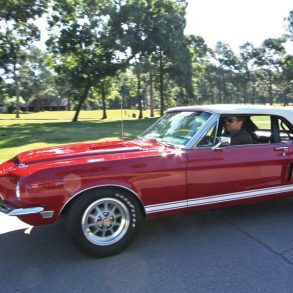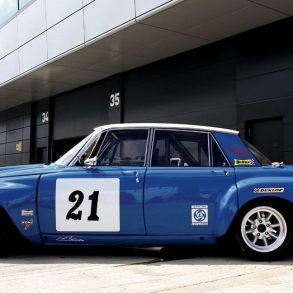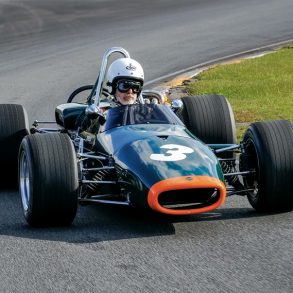On May 29, 1960, Sir Stirling Moss drove his Lotus 18 for almost three hours of punishing racing, battling through the rain on the streets of Monte Carlo to win the Monaco Grand Prix. It was the first victory in a Formula 1 world championship race for Lotus.
Exactly 60 years after it all began, Lotus is paying tribute to the beginning of its truly remarkable Formula 1 history, which has seen legendary drivers such as Mario Andretti, Jim Clark, Jochen Rindt, Emerson Fittipaldi, Graham Hill, Ronnie Peterson and Ayrton Senna all claim wins for the Norfolk-based outfit.
After the first victory by Moss, Lotus racecars went on to take the chequered flag a further 80 times, delivering six Drivers’ Championships and seven Constructors’ Championships.
It was at Monaco, in 1960, where Sir Stirling Moss cemented his reputation as a rain master. He drove his new Lotus 18 relentlessly through the wet streets with supreme confidence to take the chequered flag.
After setting new lap records in practice, then claiming the first-ever pole position for Lotus in qualifying, it was a near-flawless display. In a real race of attrition, only the top three drivers completed all 100 laps of the course and just five racers were classified. Moss beat his nearest competitor, Bruce McLaren, by 52 seconds.

Phil Popham, CEO, Lotus Cars, added: “Today we mark not just a legendary driver and a remarkable achievement, but the start of a defining period in the history of Lotus. Sir Stirling Moss is a name etched into motorsport folklore, and his skill at the Monaco Grand Prix exactly 60 years ago was the catalyst for our successful heritage in Formula 1. That overwhelming drive to defy expectations and explore the limits of what’s possible is still engrained within the Lotus DNA to this day.”
Clive Chapman, Managing Director of Classic Team Lotus and son of Lotus founder Colin Chapman, said: “Moss winning the 1960 Monaco GP was a classic David vs. Goliath-type story, which was well-received and an important boost to the Lotus marque, still in its relatively early days. Moss was naturally quick, thoughtful and mechanically sympathetic – all characteristics which were of utmost benefit at Monaco, back when the race was three hours long.”
Moss was driving a Lotus Type 18 for the privateer Rob Walker Racing Team and had already proven that talent and reliability were a match for the very best and well-equipped manufacturer outfits. The team was founded by Rob Walker, the heir to the Johnnie Walker whisky empire, who decided for 1960 he would concentrate solely on Moss and, starting with Monaco, switched to using Lotus cars. It was an inspired move.
Chapman continued: “Rob Walker and my father enjoyed a mutually beneficial relationship which realized great success throughout the 1960s. Walker’s enduring relationship with Sir Stirling Moss was even stronger. Evidently Walker, as privateer entrant and sponsor, provided Moss with what he needed in order to realize his prodigious ability.”
It was Moss who began the special relationship between Lotus and Formula 1’s most famous Grand Prix, with a further six wins in the principality after 1960. Chapman explained. “The 1960 win came just two years after the first Team Lotus GP entry, at the 1958 Monaco GP with Cliff Allison racing his Lotus Type 12 into an extraordinary sixth place.”

Mastering the Rain – Lotus and Moss in Monaco
The 1960 Monaco Grand Prix weekend got off to a flying start with Moss setting new lap records in practice and qualifying, earning him a spot on the front row of the grid and giving Lotus its first ever pole position. But this was to be no ordinary ‘lights to flag’ victory.
With eight drivers not qualifying, only 16 cars made it to the track. Up the hill from the start Moss was passed by Jo Bonnier in the rear-engined BRM, who led for 17 laps until his brakes began to fade and he surrendered the lead to Moss.
A few laps later the rain began to fall and Jack Brabham overtook Bonnier for second place as the drivers slowed to cope with the worsening conditions. The wet track became the leveller, forcing supreme concentration as the drivers battled to remain on the tarmac. Exemplary car control and driver input were critical in such treacherous conditions.
On the 43rd lap, Brabham was hounding Moss for the lead but succumbed to gearbox problems. With the rain gradually easing, Moss began to pull away from the pack until he had to pit on the 60th lap with a loose plug lead, allowing Bonnier to regain the lead.
The race was one of attrition. Pools of water remained across the track surface and Graham Hill collided with the commentators’ box. But it was in this tricky period of the race where Moss used his finesse and car control skills to catch Bonnier and continue to victory, finishing ahead of the duelling Bruce McLaren and Phil Hill. It was the first chapter of an epic story for Lotus.

Moss won at Monaco in a Lotus 18, and it’s one of many significant Lotus road and race cars which are included in the newly launched Heritage section on media.lotuscars.com. Part of the site’s continuing development, there is also a newly written biography of Colin Chapman and a history of the Lotus HQ in Hethel, Norfolk.














No mention of Innes Ireland, who won the first Grand Prix for the works Lotus team? And then got shafted by Chapman?
Willem Oosthoek